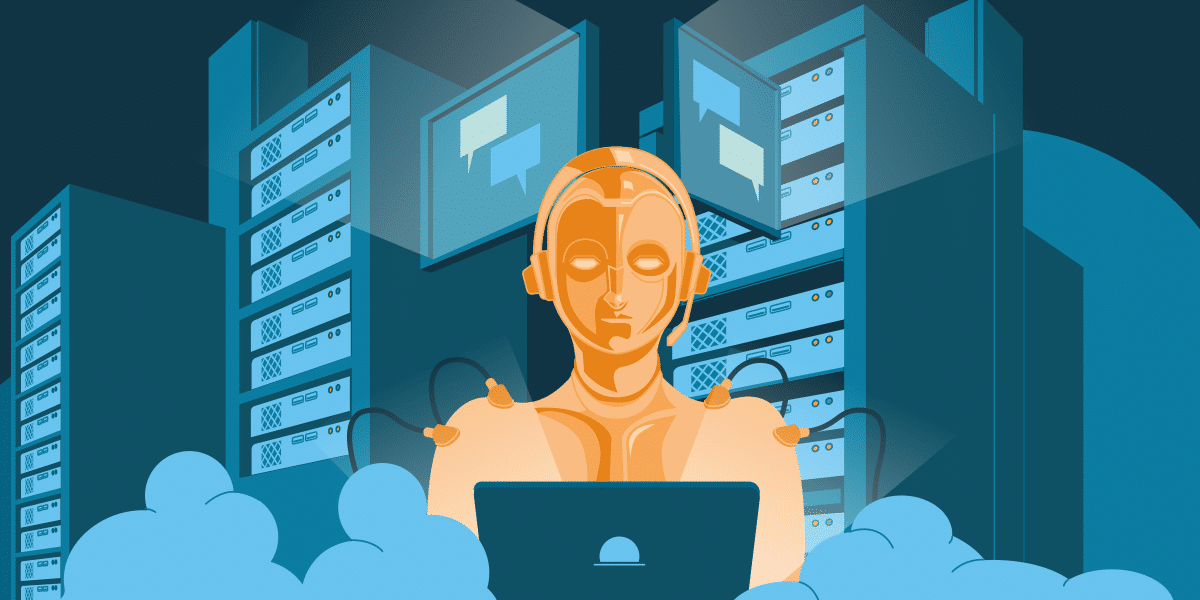A look at the service desk of the future
As customer expectations rise, service desks are being forced to adapt to meet increasing demands within their organizations. So, will the service desk as we know it still exist in, say, 2030?
Spoiler alert: we don’t think it will. The question is: what might it look like instead? Let’s take a look at the service desk of the future.
The service desk as we know it
Before we go forward in time to the service desk of the future, let’s look at the service desk as we know it.
In many cases, service desk employees offer first-line support: handling incoming calls, providing customers with workarounds to known problems, and answering any other questions they might have. Some of these tasks are pretty repetitive.
In some organizations, service desk employees use a script or knowledge items to answer standard questions. Questions that require more expertise usually move on to second or third-line support.
By 2030, chatbots, scripts, and other tools will have taken over the simple, repetitive tasks that some service desk employees now do.
Automation will make repetitive calls a thing of the past
Although the digital workforce probably won’t take over the service desk any time soon, by 2030, that could all change. Why? Thanks to new and improved technologies such as AI and chatbots, the need for a service desk staffed by people handling repetitive calls will simply disappear.
By 2030, chatbots, scripts, and other tools will have taken over the simple, repetitive tasks that some service desk employees now do. Take for instance resetting passwords or assigning user rights. Some service desks still do this manually.
But why should an employee handle these simple tasks when a chatbot can do it in a fraction of a second? And why should service desk employees spend their entire day giving customers standard answers from a knowledge item? All this does is create high staff turnover. So why not start automating?
Customers are getting used to being more empowered. Most organizations already have a self-service portal or knowledge base where customers can find their own answers. At the service desk of the future, this will go even further. And, if customers can’t find what they need themselves, a chatbot will be ready to help them. The technology is already quite advanced – just imagine what it will be like in 2030.
Customer experience will be top priority
Apart from offering first-line support, the service desk also plays a key role in both customer experience (CX) and employee experience (EX). Service desk employees are the face of your organization: customers and employees will often judge your company based on their interactions with your service desk.
Because service desk employees handle lots of similar calls on a daily basis, often with the help of standard answers or knowledge items, customer experience and employee experience don’t always get the attention they deserve. More often than not, service desk managers focus more on employee efficiency and targets rather than on providing excellent service.
Already, customer experience and employee experience are becoming increasingly important for most organizations. This won’t change in 2030. In fact, customer experience and employee experience will become even more of a priority for businesses.
Adapting to the future of service desks
So, what does all this mean for life at the service desk as we know it? And how will service desk employees have to adapt?
It’s pretty clear that the service desk of the future will need a different type of service desk employee. With the digital workforce handling repetitive calls, service desk managers will have to be creative with how they deploy service desk employees. Here’s what service desk employees will be doing in 2030:
Putting CX and EX in the spotlight
In 2030, front office employees will no longer be found solving relatively easy calls for IT, FM, or HR. Instead, their role will become more focused on hospitality, customer experience, and employee experience. Since chatbots and other technology will deal with repetitive tasks, service desks can spend more time and effort on delighting customers.
Handling complex calls
Of course, there will always be questions that technology can’t solve. That’s why the service desk of the future needs skilled service staff to solve more complex calls. This may take the form of a service desk or a back-office team.
Serving as a single point of contact
As mentioned, in 2030, customer experience and employee experience will be top priority for most organizations. This means many will likely adopt a fully-fledged Enterprise Service Management (ESM) approach, which will allow them to provide excellent service.
A single point of contact (SPOC) is crucial for ESM. That’s why the service desk of the future will transform into a SPOC. This way, customers will know that their question or issue will be properly addressed by the appropriate person.
In 2030, every organization will offer a SPOC in some shape or form. Your SPOC and its employees will be the face of your organization. And, in cases where a physical SPOC isn’t an option, organizations will opt for a digital SPOC.
Facilitating peer-to-peer support
Today, customers can help other customers find answers to their problems. And, alongside chatbots and other technology, this peer-to-peer support will only become more relevant at the service desk of the future. The service desk of the future will help facilitate this process by, for example, moderating forums where customers can share knowledge amongst themselves.
Ready for 2030?
Clearly, the service desk of the future will look very different from what we’re used to now. What do you think the fate of the service desk will be in ten years?
Inspire others - Share this blog





